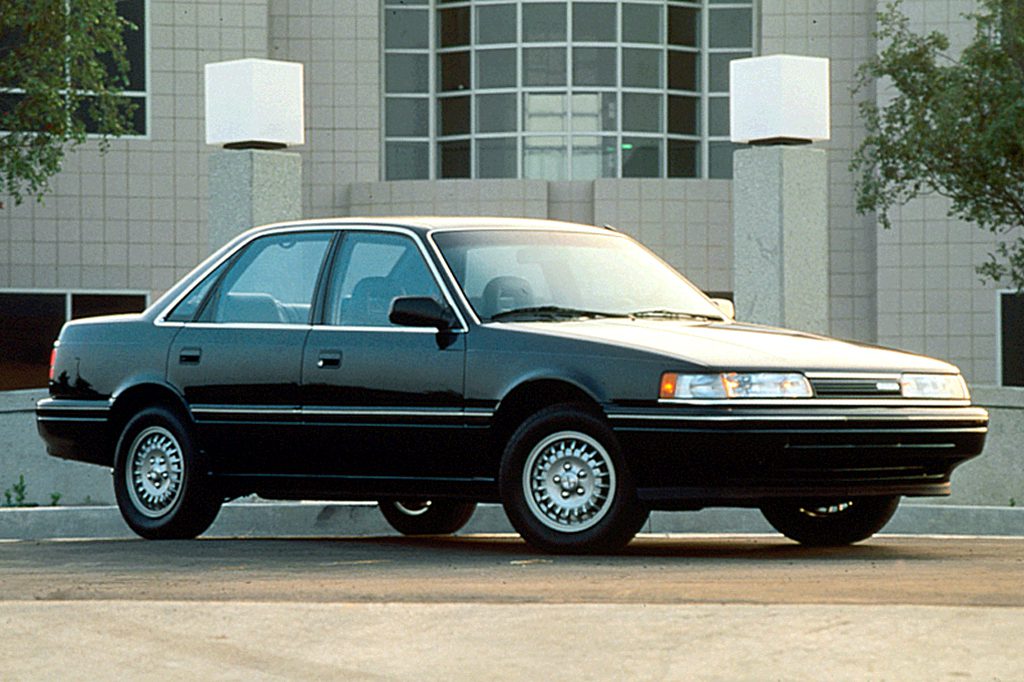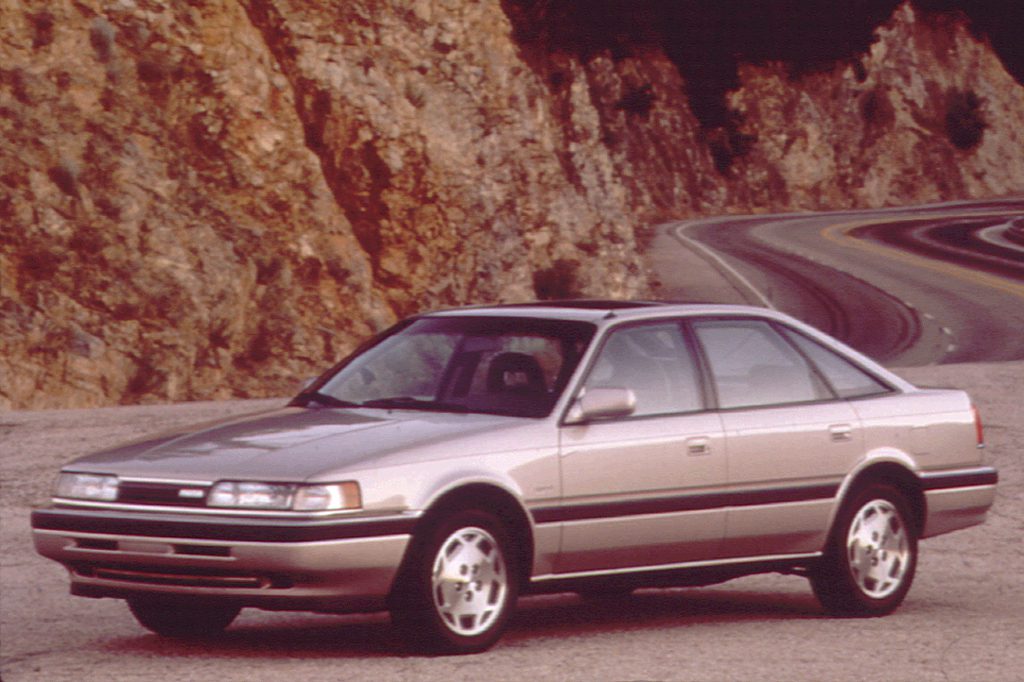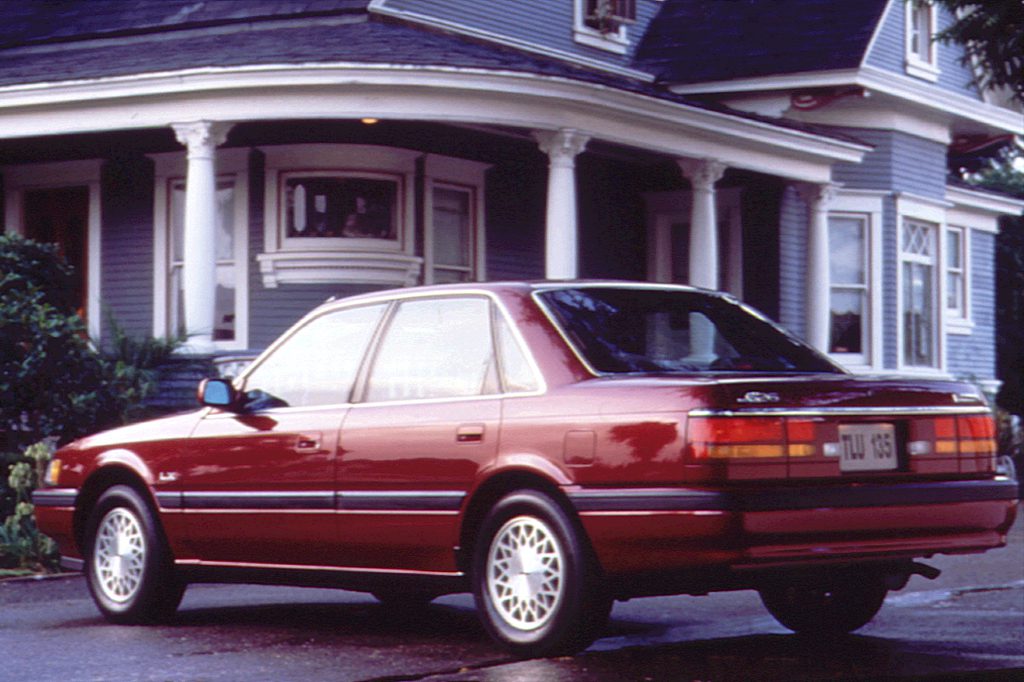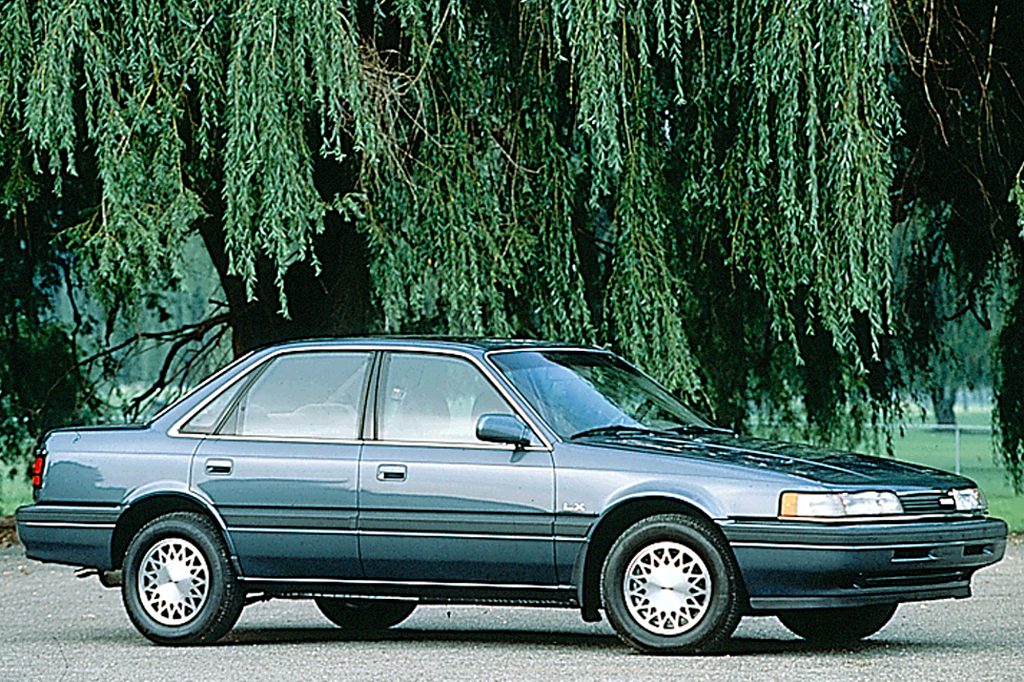| Midsize car; Built in USA, Japan |
|
|
| Good condition price range: $1,000 – $1,400* |

1991 Mazda 626 LE 4-door sedan

1991 Mazda 626 4-door hatchback

1990 Mazda 626 4-door hatchback

1990 Mazda 626 LX 4-door sedan

1992 Mazda 626 4-door sedan
| Pros: |
|
| Cons: |
|
All in all, this is a refined rival to the Honda Accord or Toyota Camry. In addition to a selection of practical virtues, you get Mazda’s reputation for above-average reliability.
Overview
The third generation of Mazda’s compact sedan had been introduced in 1988. The 4-door (notchback or hatchback) was still called 626, but the related coupe, named MX-6, now rode a shorter wheelbase. For 1990, antilock braking was newly optional on the mid-range 626 LX model, and also on the more costly hatchback GT Touring Sedan. Also new was a fresh grille and new taillamps. DX and LX sedans carried a 110-horsepower, 2.2-liter 4-cylinder engine. A turbocharged rendition of that 2.2-liter was installed in the GT model, developing 145 horsepower.
Yearly Updates
| 1991 626 Nothing was changed mechanically for 1991. |
| 1992 626 By 1992, the slow-selling hatchback Touring Sedan was dropped. Otherwise, the 626 continued for its final season in this form virtually unaltered. |
